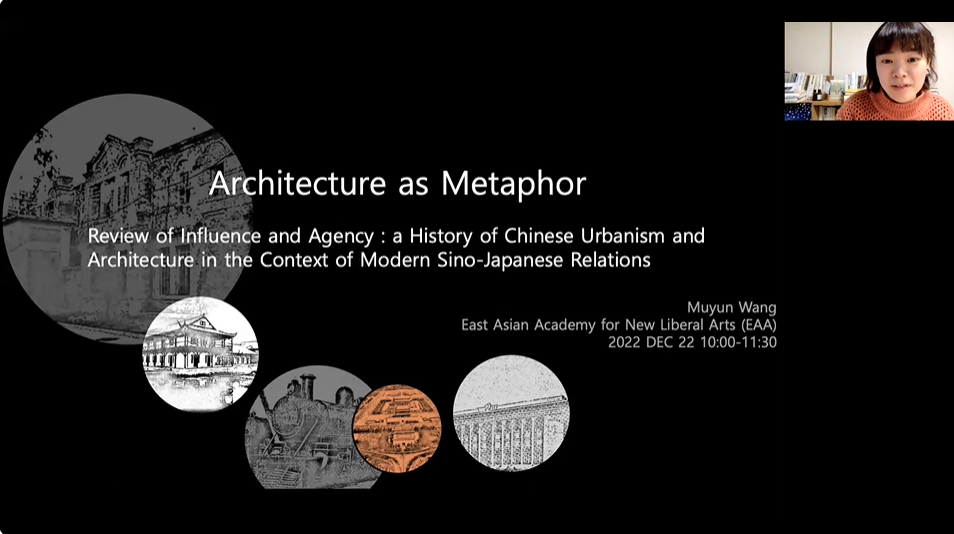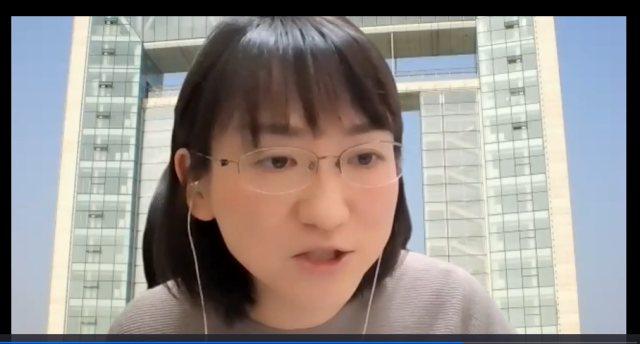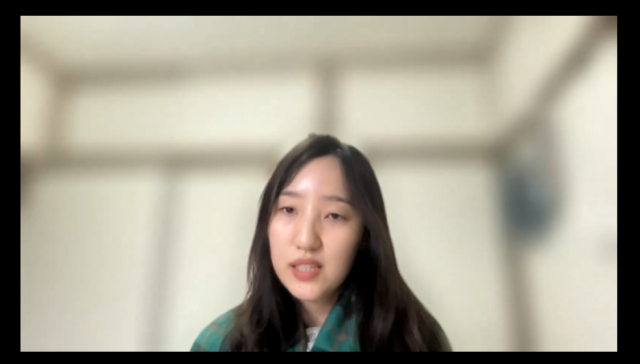The Room and Space Research Group held its fifth meeting at 10:00 am on December 22, 2022. Muyun Wang from the East Asian Academy for New Liberal Arts (EAA), at the University of Tokyo gave a presentation on “Architecture as Metaphor—Review of Influence and Agency: a History of Chinese Urbanism and Architecture in the Context of Modern Sino-Japanese Relations.”

On this occasion, Wang explored the theme “Room and Space” through her experience of recognizing infrastructure as a way to express modernity through space reconstruction. Due to her interest in modernity inside architecture, Influence and Agency (Subin Xu, the University of Tokyo Press, 2009) was chosen to be discussed as it is supposed to offer insights for understanding the historical process of the formation of modern Chinese architecture.
This book draws on the current historical materials and studies of architecture to explore the changes in the agency of China by discussing the relationship and interaction between Japan and China in the early twentieth century. Generally, the influence of ancient China on Japanese architecture is well-known; however, few studies have referred to Japan’s impact on China’s modern space genealogically. Therefore, this book examines how China received architectural technologies from Japan in the twentieth century. Chapters 1–3 of the book focus on the establishment of the educational system, railway construction and industry exhibitions in the “architect-less period” of the late Qing dynasty, while Chapters 4–6 focus on specific architects and researchers—Shiyin Liu, Dunzhen Liu, and Dongri Zhao—in the Republic of China, and the early years of the People’s Republic of China. The book shows how modern Chinese architecture metamorphoses via various interactions, and how architecture became an essential way for a nation to express itself. The author also emphasizes that the practice between “reception” and “anti-reception” of the knowledge, technology, experts, and education systems from foreign countries shaped the history of modern China. Additionally, “nationalism” is regarded as a crucial element of such practice, since issues of the nation’s survival and sovereignty affected China’s perception of itself and its relationship with other countries significantly at that time.
In the Discussion section, two topics are raised. The first concerns the association between “emotion, creation, and agency.” As mentioned in this book, the creation of space is always accompanied by a desire for another “ideal space.” In China, a hundred years ago, the greatest motivation for the Chinese to create new room and space was to make China prosperous and potent enough to withstand the outside world. Such motivation undoubtedly becomes an emotional source of China’s agency. Compared to history, the current question we are facing is: when we talk about creating room and space in universities, or more specifically, in our Sho-in, who should have agency in this case? And what might be the emotional resource of such a creation?
The second issue regards “the materiality of space.” The (re)construction of modern architecture and cities is only possible with significant input of financial, technical, and human resources. On the one hand, it is challenging to create an independent space without external resources and materials; on the other hand, external resources and materials can also limit the autonomy of a specific room and space significantly. Further discussion on the affinity between external resources and space, or whether we there is any necessity or opportunity to transcend such tension, seems inevitable.
Reported by Muyun Wang (EAA Project Research)











